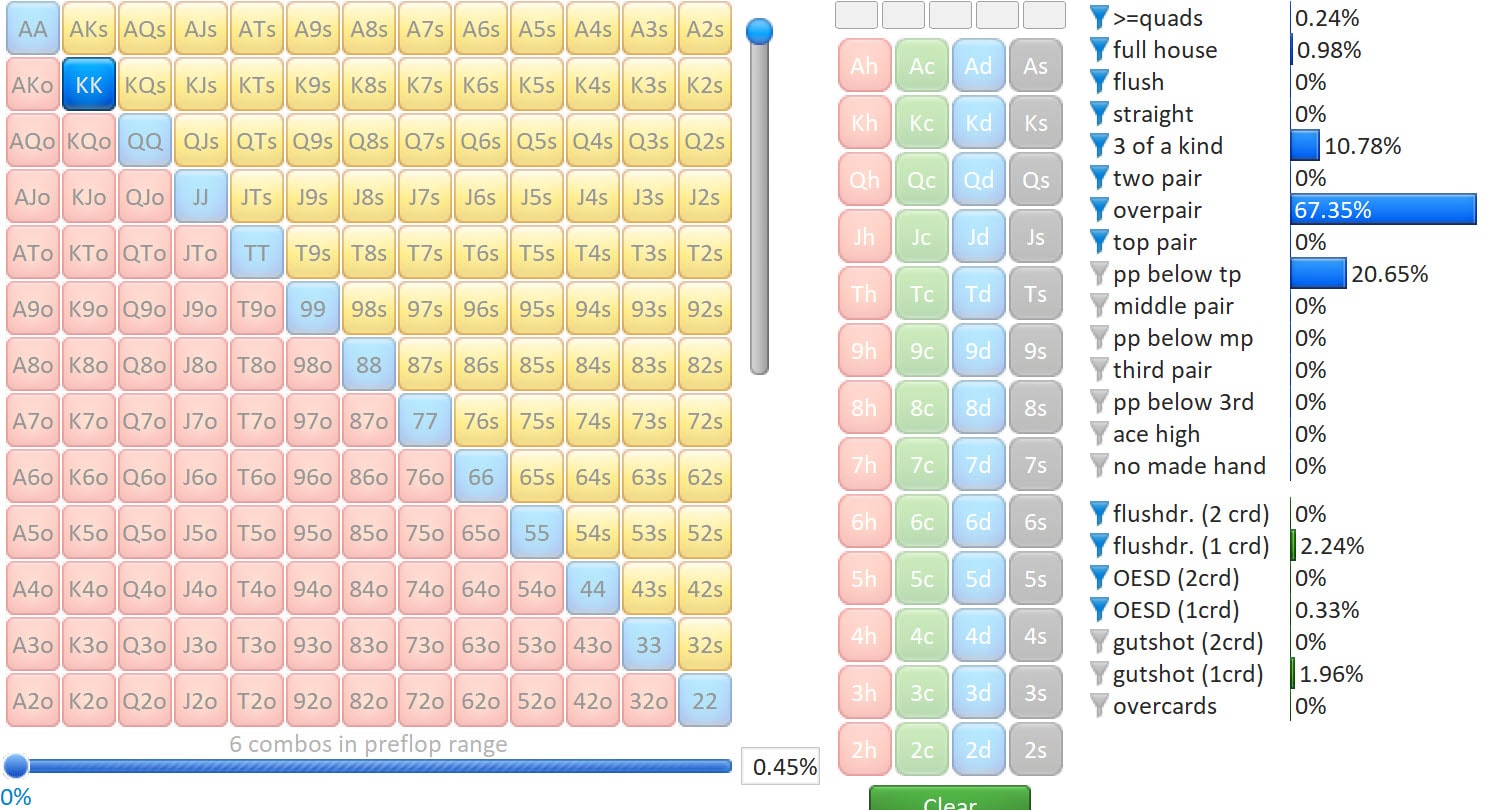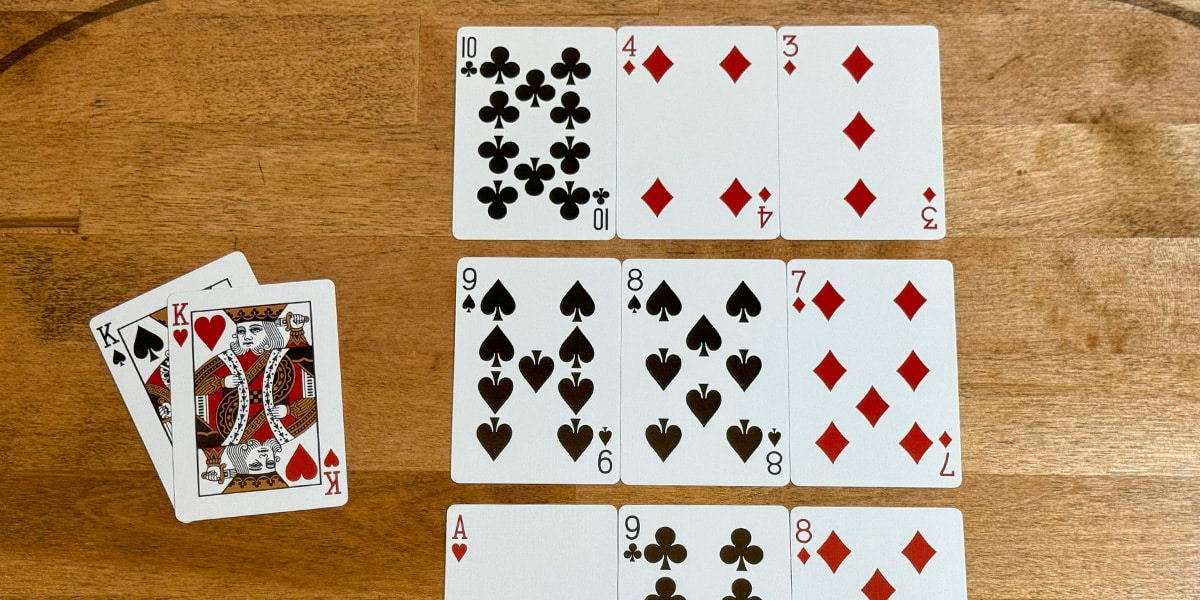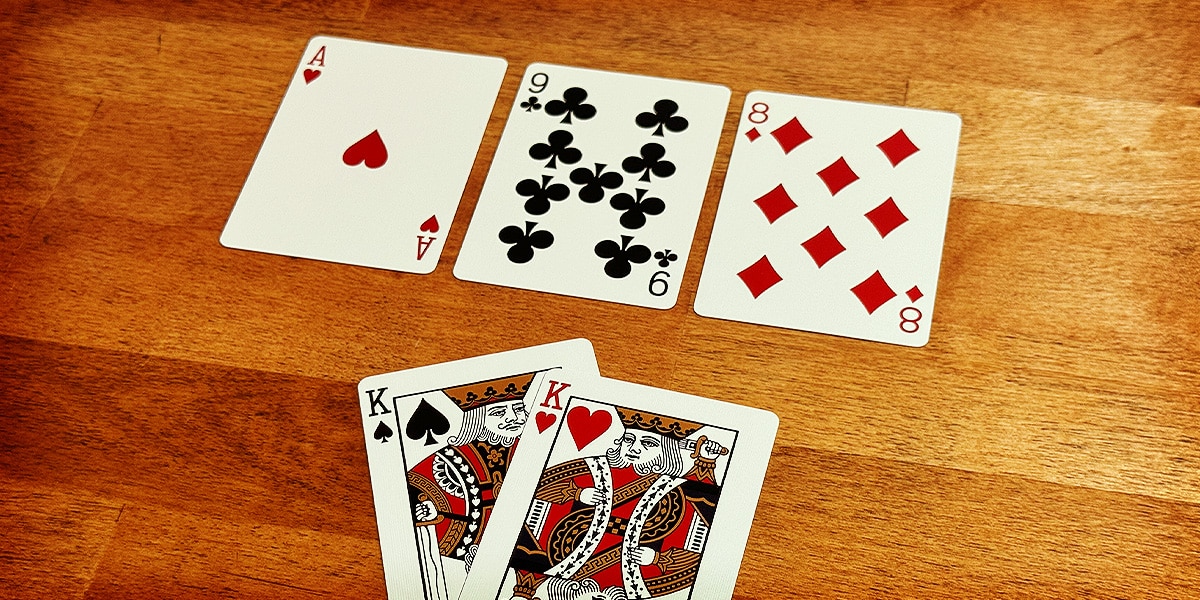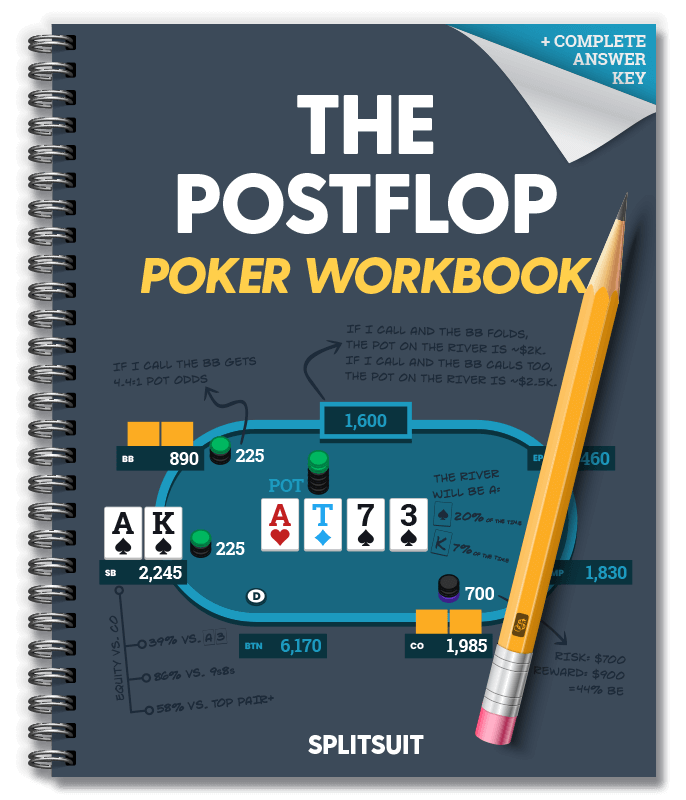Pocket Kings is one of the most powerful starting hands in No Limit Hold’em. KK is also known as ‘cowboys’, though, if luck isn’t on your side, you might find ‘Ace magnets’ a more fitting moniker.
Even though KK is such a powerful starting hand, it can still create confusion for beginner-intermediate poker players. So let’s break down pocket Kings and give you some usable strategic insights for both preflop and postflop.
Push play and/or continue reading.
Why Players Love Pocket Kings
Pocket Kings is a hand that often evokes both love and hate from players.

On one hand, it’s almost always strong enough to stack off preflop. Unless your opponent is a super nit and/or the stacks are incredibly deep (like, hundreds of big blinds effective), getting KK all-in preflop is quite lucrative.
KK also flops an overpair, or better, a significant 79% of the time. Compare this to AA, which is an overpair+ on the flop 100% of the time, but also to QQ, which drops down to about 65%.
Of course, overpairs don’t guarantee the win or even an easy postflop pot – but they sure are easier to play than dealing with an overcard on board!
Why Players Hate KK
On the other hand, it can feel like your pocket Kings always runs into Aces preflop.
Of course, this isn’t actually true. But it’s easy to only remember when it happens (and forget the times you get KK all-in preflop against QQ and win or fade villain’s AK).
The other point of hatred is how the value of KK diminishes significantly if an Ace hits the board. This is true whether the Ace pops on the flop, or hits later in the hand.
You can also make an argument for KK being tough to maximize value the times it does smash a set. Unless the board is AK5 and your opponent has an Ace, it’s tricky to win a huge pot. But more on that later…
How Do Pocket Kings Hit Flops?
If you pull out Flopzilla Pro and plug KK into the matrix, you can see exactly how KK hits across all possible flops.

The highlights are as follows:
- Two pair+: 12%
- Pair: 88% (Overpair: 67%, Underpair: 21%)
- Draws (gutshot+): 4.5%
- Overpair and better: 79%
So KK is an overpair or better 79% of the time and has to contend with an Ace-high board 21% of the time. Not too bad!
Preflop Tips With Pocket Kings
Before we get into postflop strategy, let’s make sure you are playing preflop correctly. Here is how I approach KK preflop:
Be Aggressive
As a default strategy, be aggressive with pocket Kings. Isolation raises, 3-bets, 4-bets, and 5-bets are all viable options.
Remember, Kings are more vulnerable than Aces, so it’s crucial to discourage opponents from seeing a cheap flop with random Ace-X hands.
Squeeze KK With Confidence
Whenever possible, squeeze with pocket Kings. Avoid multi-way pots and aim for heads-up scenarios, where pocket Kings have a higher chance of success.
Squeezing also allows you to extract more value from your opponents (both the original raiser AND the through-callers).
Don’t Fold KK Preflop (PLEASE!)
Pocket Kings are the second-best starting hand in Hold’em. Unless stack sizes are extremely deep or your opponent is a known nit who exclusively has pocket Aces in this spot, just don’t consider folding preflop with pocket Kings.
Folding this hand too frequently is a sign of overly cautious play and can harm your profit potential.
Spending time trying to find hero-folds with KK preflop is wasted energy.
Postflop Strategy With Pocket Kings
It’s impossible to cover all possible flop, turn, and river occurrences, but we can break KK into usable buckets.
So let’s break postflop strategy into the times we have an overpair, when the board is Ace-high, and when we smash a set or better.
How To Play KK As An Overpair
An overpair with KK shines brightest on a dry board, where its strength is most potent.
For example, when facing a typical call versus a 3bet range on the button, an overpair of KK could command equity over 80% on a ‘safe’ texture like T43. However, the situation changes on boards that exhibit a lot of mid-range coordination, such as a 9♠8♠7♦ texture, where the equity of KK dips to just over 60%.
Interestingly, the presence of an Ace on the board affects the equity of KK similarly, giving KK around 61%. This indicates that encountering an Ace on the flop is nearly as challenging as navigating a board with serious mid-range coordination.

In the most challenging scenarios, such as when the flop reveals an Ace alongside some mid-range connected cards (e.g., A98r), the equity of KK can fall to around 55%.
Despite these hurdles, KK often remains robust enough to extract three streets of value postflop, even if a straight or flush completes. Yet, the situation becomes more complicated if both a straight and flush complete, or if the board presents a 4-to-straight or 4-to-flush scenario, diminishing the value of our overpair of Kings going for three streets of betting.
In postflop play, while it’s generally advised not to fold an overpair of Kings even when facing aggressive betting across three streets, it’s crucial to consider both the texture of the board and the tendencies of the opponent. This strategic assessment helps in making informed decisions, ensuring that even with a strong hand like KK, one navigates the complexities of the game with caution and insight.
How To Play KK On An Ace-High Board
When holding a pair of KK on an Ace-high board, a cautious, passive approach is often the most prudent strategy.
Despite this, some players might choose to initiate the action with a small bet on the flop, aiming to establish control or test the waters. However, as the hand progresses to the turn and river, shifting towards more passive play becomes crucial.

The primary goal in such scenarios is to navigate the hand toward a showdown with minimal risk while also seizing the opportunity to extract value on one betting street. This opportunity arises particularly when it becomes apparent that the opponent may not hold the Ace.
Effectively assessing the situation and the opponent’s possible holdings is key to maximizing the value of KK in these tricky situations.
By adopting a passive strategy post-flop, you allow yourself the flexibility to react to your opponent’s actions, making it possible to secure a street of value when the conditions are right.
This approach helps to protect your stack from significant losses while still capitalizing on the strength of your hand when the odds are in your favor.
How To Play A Set Of Kings
When holding a set of Kings, or a stronger hand, the general strategy leans heavily towards playing for stacks.
The notable exception to this aggressive approach is when the board puts up a 4-to-straight or 4-to-flush, which significantly dilutes KK’s dominance and necessitates a more cautious play.
On a dry board, however, a set of Kings virtually locks up the board, presenting a strong case for initiating the action with a small bet on the flop. This move can serve to build the pot gradually while keeping opponents engaged.
Despite the theoretical merit of small initial bets, practical experience against most opponents suggests a more robust strategy of betting big from the outset to generate maximum value.

Are You Regularly "Lost" Postflop?
I've strengthened my postflop strategy immensely over the years by studying the right concepts, being able to closely estimate outcomes, and understanding the technical aspects of the game. My new Postflop Poker Workbook runs you through the same exercises that I've been doing and comes with a complete answer key plus a companion video course. Get your copy today and start seeing postflop more clearly.
The essence of this approach is not just to inflate the pot, but to create a scenario where it becomes feasible to get stacks in by the river.
This may mean adjusting the strategy to include overbets on the turn and river, ensuring that when the conditions are right, your set of Kings is leveraged to its maximum potential.
The overarching goal remains clear: to navigate the hand towards a scenario where all chips are in the middle.
Pocket Kings FAQ
Q: What is Pocket Kings, and why is it significant in No Limit Hold’em?
A: Pocket Kings, also known as KK or “cowboys,” is the second most powerful starting hands in No Limit Hold’em. It’s highly favored for its strength, but it can also be tricky to play, especially for beginner players.
Q: Why do players have mixed feelings about Pocket Kings?
A: Players love Pocket Kings because they are strong enough to go all-in preflop and often result in an overpair postflop. However, they can also feel like “Ace magnets,” running into AA preflop or losing value if an Ace appears on the board.
Q: How often do Pocket Kings flop an overpair or better?
A: Pocket Kings flop an overpair or better about 79% of the time, making them a very strong hand postflop. They flop two pair or better 12% of the time and flop a single pair 88% of the time, including overpairs 67% of the time.
Q: What is the recommended preflop strategy with Pocket Kings?
A: The key preflop checklist and strategies include being aggressive with isolation raises and bets, squeezing whenever possible to avoid multi-way pots, and almost never folding KK preflop unless facing extremely specific scenarios.
Q: How should you play Pocket Kings postflop?
A: Postflop play varies depending on the board texture. With an overpair, KK shines on dry boards but requires caution on more coordinated boards or when an Ace appears. On Ace-high boards, a more passive approach is recommended to navigate towards showdown with minimal risk.
Q: What should you do if an Ace appears on the board when you have Pocket Kings?
A: When an Ace hits the board, it’s advisable to adopt a cautious approach. Consider making a small bet on the flop to test the waters, but be ready to shift to a more passive strategy on the turn and river to control the pot size and minimize losses.
Q: Is it ever a good idea to fold Pocket Kings preflop?
A: Folding Pocket Kings preflop is generally not recommended unless you’re in a game with extremely deep stacks or you have a very strong read that your opponent exclusively has AA. Pocket Kings are the second-best starting hand, and folding them frequently can harm your profit potential.
Q: How do you maximize the value of Pocket Kings when you hit a set?
A: Maximizing value when hitting a set with KK can be challenging unless the situation is highly favorable, like AK5 with your opponent holding an Ace. The strategy involves betting and raising to build the pot while being mindful of the board texture and potential draws your opponent may have.
Wrapping Up
Understanding the science of pocket Kings is crucial for any serious NLHE player. While the hand has its challenges, understanding the preflop and postflop strategies will greatly improve your chances of success.
Remember to be aggressive preflop, squeeze when appropriate, and avoid folding this powerful starting hand.
Adapt your postflop play based on the board texture and adaptability of your opponents. By applying these strategies, you’ll be well on your way to optimizing your winnings with pocket Kings.
Good luck, and happy grinding!
